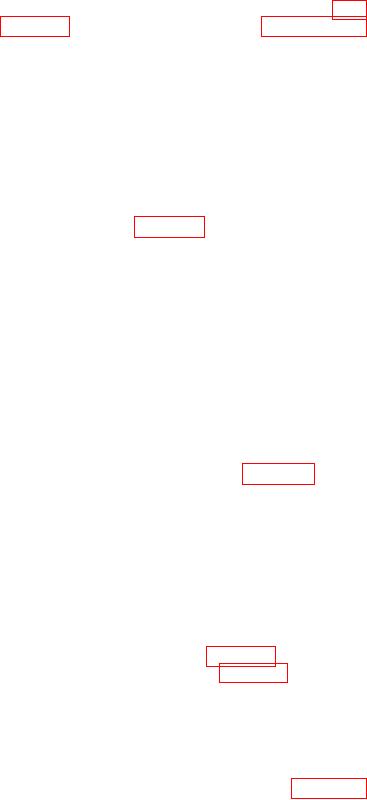
TM 1-1500-204-23-11
(5) Hole Sizes. Hole sizes should be large
plate. A smaller delection is required to load the
adjoining structure for fasteners with smaller initial
enough to avoid interference its, which will cause
clearances than another hole with a larger fastener
damage to the composite structure. Refer to para-
clearance. However, interference it fasteners should
graph 6-8 for additional details. See paragraph 7-7e
not be used in composite structures. The composite
below for locating blind holes.
matrix may crack or delaminate resulting in strength
degradation as the interference it fastener is pressed
b. Fastener Installation. Different installation and
into place. A Class II it (clearance of +0.0025/-0.000
inspection procedures are required for the different
inch) is normally speciied for structural fasteners in
types of fasteners. The following is the installation
instructions for Hi-Lok and blind fasteners.
(1) Galvanic Corrosion. Galvanic corrosion
(1) Installation of Hi-Lok Fasteners. Hi-Lo-
between aluminum and carbon has led most com-
ks are designed to be installed with either spe-
posite fasteners to be made of stainless steel or
cially designed Hi-Lok tooling or standard hand or
titanium.
power tools with Hi-Lok adapters. Refer to TM
1-1500-204-23-10, Chapter 7 or the system speciic
(2) Multiple Row Fastener Patterns. Multiple
technical manual for additional information on Hi-Lok
row fastener patterns are required to gradually intro-
with these additional provisions.
duce load from the part being repaired into the repair
patch. It is virtually impossible to distribute the load
(a) Secure the structures to be joined with
evenly between all the fasteners in a multiple row pat-
temporary fasteners.
tern. In general, the load in the fasteners increases
with their distance from the center of the damage
(b) Measure the panel thickness and
cleanup hole, with the load being the highest in the
determine grip length of the pin to be
outermost fasteners. The amount of load shared by
installed.
the fasteners in the pattern can be increased by
using close tolerance fasteners and close tolerance
(c) Wet the grip surface of the pin with
fastener holes patterns. An improperly designed fas-
sealant then insert.
tener pattern or tapered/stepped patch can result in
premature failure of the repair. Only those fastener
(d) Ensure pin protrusion limits are per TM
patterns and patches called out in either a system
1-1500-204-23-10, Chapter 7 or the
speciic technical manual or by engineering shall be
system speciic technical manual.
used for repair.
(e) Install collar with the appropriate pneu-
matic tooling or ratchet wrench.
(3) Large Footprint Fasteners. Large footprint
fasteners should be used. Standard solid rivets or
(f)
Torque ratchet wrench until wrenching
blind fasteners with bulbed tails will cause damage
device shears from collar.
in the part, such as surface and subsurface cracking
and delamination. Special wider area fasteners that
distribute the load over the surface, such as two
(2) Installation of Blind Fasteners. The tool-
piece fasteners with a large footprint, and special
ing required for installing Visu-Lok or Composi-Lok
blind fasteners designed for composites should be
blind fasteners are found in tables 3-4 through 3-6.
used. Fastener manufacturers and system speciic
Refer to TM 1-1500-204-23-10, Chapter 7 or the sys-
guidance should be consulted prior to use.
tem speciic technical manual for additional information
on Visu-Lok with these additional provisions.
(4) Edge Distance and Fastener Spacing. E-
(a) Secure the structures to be joined with
dge distance and fastener spacing is often larger in
temporary fasteners.
composites than in similar metal repairs. The industry
rule of thumb for edge distance in composites is to
(b) Use a fastener grip gauge (igure 3-11)
ensure the distance from the center of the fastener
inserted through the fastener hole
hole to the edge of the patch is 3 times the fastener
to measure the material thickness to
diameter (3D). Changing the repair material, geome-
determine the blind bolt length required.
try or fastener size/type will greatly alter the fastener
Take numerous measurements around
spacing and edge spacing. Therefore, if a repair
the fastener hole. If the skin is tapered,
calls for one fastener and another is substituted, the
the grip length must be determined by
fastener spacing and edge distance will need to be
the depth at the centerline of the hole.
reexamined by an engineer and possibly changed.
7-35

